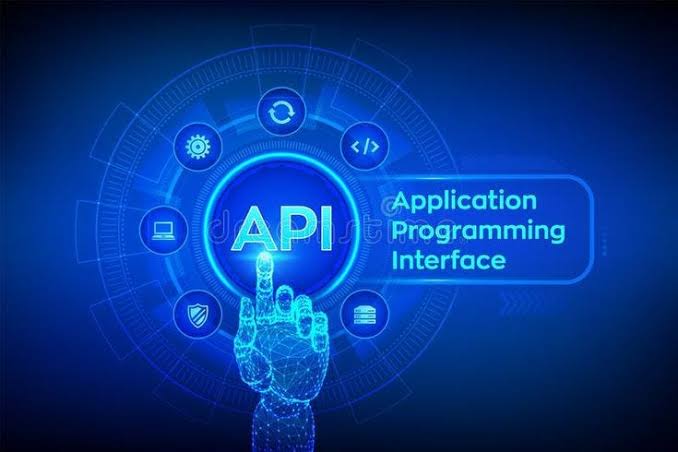In the rapidly evolving world of software development, Application Programming Interfaces (APIs) have become foundational to how digital systems are built, scaled, and maintained. APIs serve as the connective tissue that allows applications to communicate with each other, enabling developers to integrate various functionalities, data, and services without building everything from scratch.
As of July 2025, APIs are more critical than ever due to the growing need for interoperability, cloud services, mobile app development, and microservices architecture. Whether for connecting third-party services, automating workflows, or scaling enterprise systems, APIs streamline the development process while boosting productivity and innovation.
What Is an API?
An API is a set of rules and protocols that define how different software components should interact. It acts as a middle layer between the backend of a system (where data and logic reside) and the frontend or another external system (where the user interacts or another application connects).
For example, when you log into a mobile app using your Google account, an API handles the communication between the app and Google’s authentication service. Without APIs, these integrations would require extensive custom development.
How APIs Enhance Development Efficiency
APIs significantly reduce development time by offering pre-built, reusable components that developers can integrate instead of creating features from scratch. This modularity is especially valuable in agile development environments where speed and flexibility are essential.
For instance, instead of building their own payment system, developers can integrate Stripe or PayPal’s API. Similarly, a mapping feature can be easily enabled through APIs from services like Google Maps or Mapbox. These integrations allow teams to focus on core product innovation while relying on APIs for essential support features.
Types of APIs in Use
- Open APIs (Public APIs)
These are accessible to external developers and are often used to foster innovation or integration across platforms. For example, Twitter’s API allows developers to build apps that can post tweets or analyze Twitter data. - Internal APIs (Private APIs)
Used within an organization to connect systems, internal APIs help different teams or applications work together more efficiently. They support digital transformation and internal automation efforts. - Partner APIs
These APIs are shared with specific external partners under controlled access. A company might use partner APIs to allow vendors to access inventory data or order systems securely. - Composite APIs
These combine multiple API calls into a single request. They are particularly useful in microservices architectures, where a client might need to interact with several backend services simultaneously.
APIs and Microservices Architecture
Modern applications often adopt a microservices architecture, where a system is broken down into small, independently deployable services. APIs are essential here, as they define how each microservice communicates with others. This allows for greater flexibility, easier updates, and independent scaling of components.
For example, in an e-commerce app, separate microservices might handle inventory, checkout, payments, and user profiles. Each of these communicates with the others through APIs, creating a loosely coupled yet coordinated ecosystem.
Enabling Cross-Platform Development
APIs play a crucial role in supporting cross-platform functionality. Whether developing for iOS, Android, web, or desktop, APIs enable seamless access to the same backend services and data. This ensures consistent performance and user experience across platforms while minimizing duplicate code.
With RESTful APIs and GraphQL gaining popularity, developers can structure requests efficiently and get exactly the data they need—improving performance and customization.
API Documentation and Developer Experience
Well-documented APIs are key to successful integration. Developer-friendly documentation, including usage examples, authentication steps, rate limits, and error codes, empowers teams to work independently and confidently. Many companies now invest in robust API portals with interactive documentation and testing environments (such as Swagger or Postman).
An intuitive and consistent API design also enhances developer experience, reducing friction during onboarding and integration.
API Security and Governance
As APIs expose application logic and data, securing them is critical. Developers must implement secure authentication methods such as OAuth2, API keys, and token-based access. Data encryption, rate limiting, and input validation are also essential in protecting against misuse, abuse, and data breaches.
Additionally, API governance involves monitoring usage, managing versioning, and ensuring compliance with industry standards. A stable versioning strategy prevents breaking changes and ensures backward compatibility for third-party users.
Monitoring and Performance Optimization
API performance directly affects user experience. Developers use tools like API gateways, logging systems, and monitoring platforms to track API health, latency, error rates, and traffic patterns. This insight allows them to optimize speed, reliability, and scalability.
Caching responses for frequent requests, load balancing, and scaling API servers are common techniques to ensure high performance under varying loads.
Use Cases of APIs in Different Industries
- Finance: APIs power mobile banking apps, payment gateways, and real-time fraud detection tools.
- Healthcare: APIs connect patient data across hospitals, labs, and health information systems, ensuring efficient care and data sharing.
- E-commerce: APIs integrate product catalogs, shipping services, inventory systems, and customer support tools.
- Media and Entertainment: Streaming platforms use APIs for content delivery, recommendations, and subscription management.
- Transportation: APIs help ride-sharing apps, logistics platforms, and GPS services offer real-time data and coordination.
The Role of API Marketplaces
API marketplaces such as RapidAPI and AWS Marketplace allow developers to discover, test, and subscribe to APIs easily. These platforms offer ready-to-use APIs for everything from weather data and machine learning to payment processing and identity verification. This ecosystem further simplifies development and fosters collaboration across industries.
Conclusion
APIs are no longer optional in software development—they are essential building blocks that power connectivity, scalability, and innovation. From enabling third-party integrations and microservices to improving developer efficiency and cross-platform functionality, APIs streamline the entire software development process. As businesses continue to digitalize and expand into cloud-native systems, the role of APIs will only grow more central to delivering agile, secure, and intelligent solutions across all sectors.




APIs are a breakthrough in modern tech